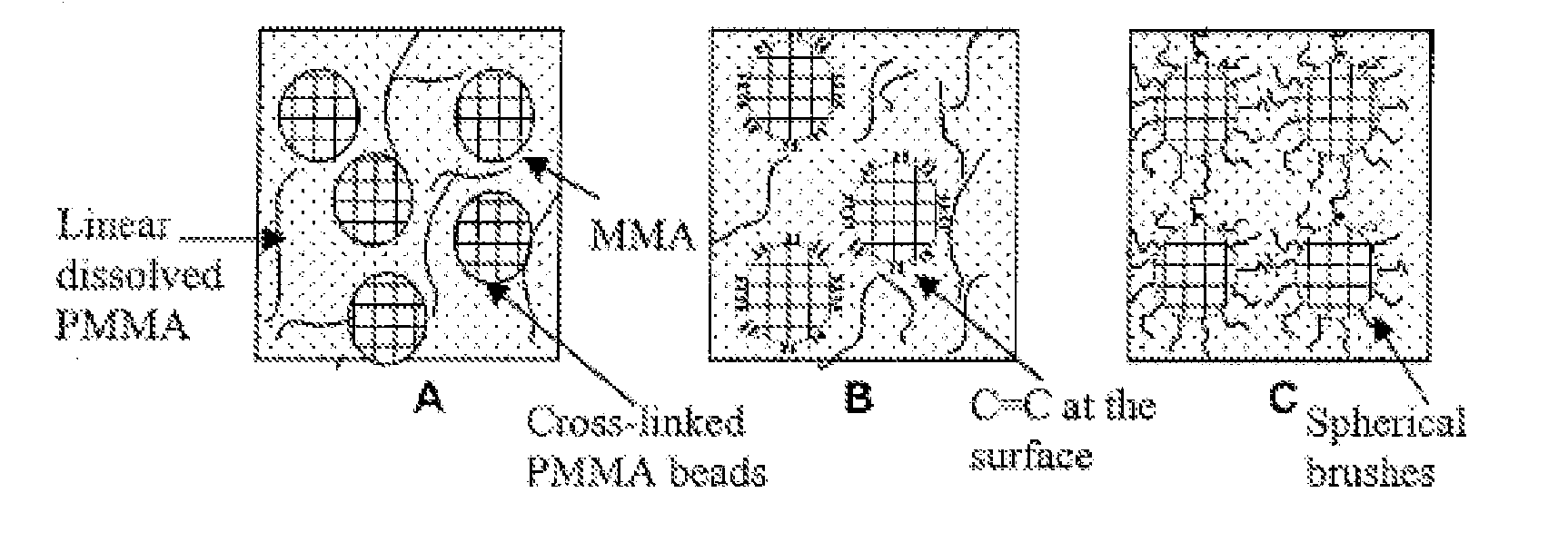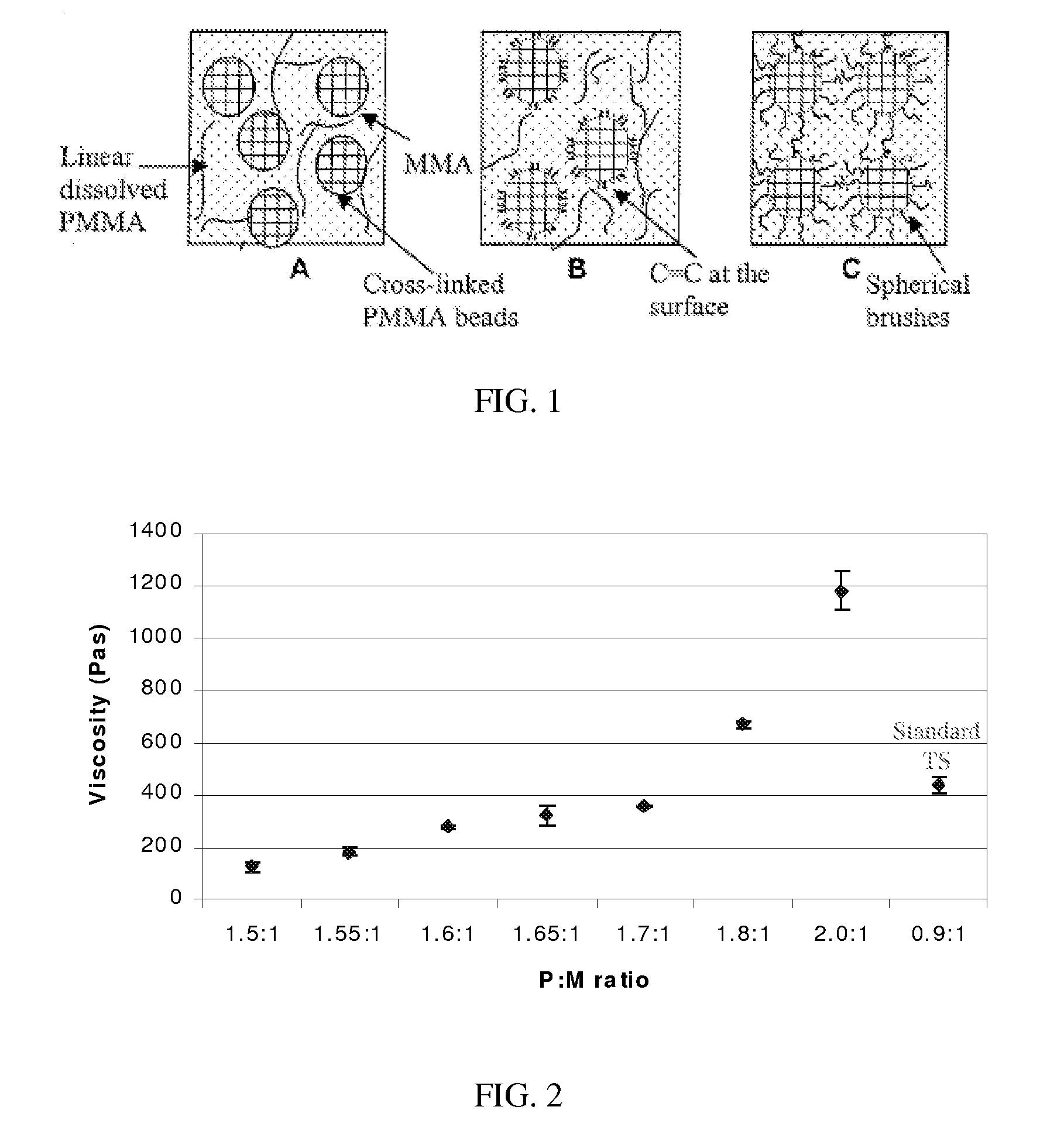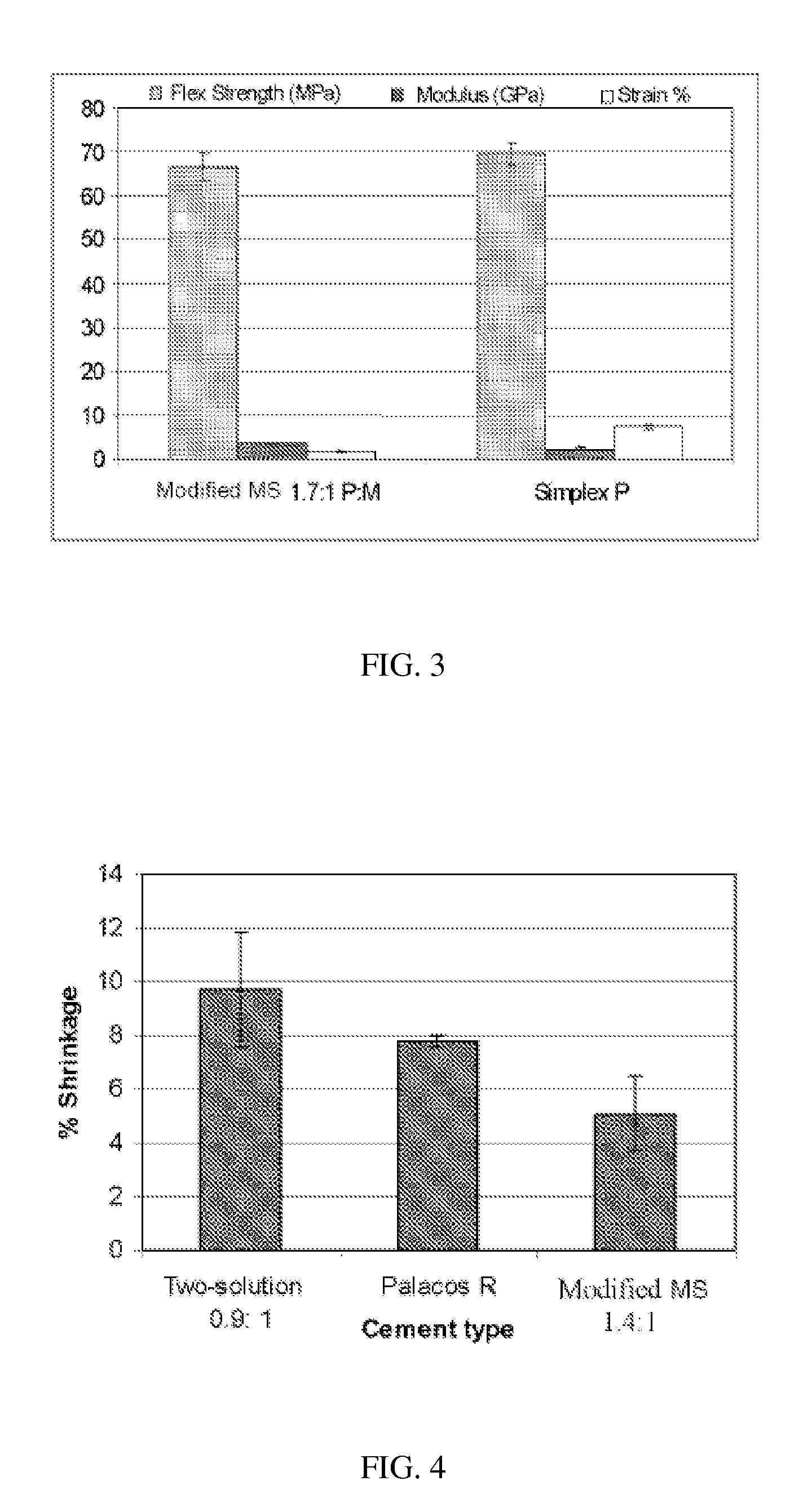Multi-Solution Bone Cements and Methods of Making the Same
- Summary
- Abstract
- Description
- Claims
- Application Information
AI Technical Summary
Benefits of technology
Problems solved by technology
Method used
Image
Examples
example 1
Synthesis of Cross-Linked PMMA Beads
[0037] This example relates to the synthesis of cross-linked PMMA beads. In brief, cross-linked PMMA beads have been synthesized via suspension polymerization of methyl methacrylate, using benzoyl peroxide (BPO), 2,2′-azo-bis-isobutyrylnitrile (AIBN), or potassium persulfate (KPS) as the initiator, ethylene glycol dimethacrylate (EGDMA) as the cross-linker (in varying concentrations), and poly(vinyl alcohol) (PVA) as the stabilizer. Resulting beads were subjected to post-synthesis heat treatment at 91° C. for 18 h in order to decompose any residual BPO and yield polymer that is stable in monomer solutions containing DMPT. Bead size can be controlled by varying the suspension medium and the speed of mixing during the synthesis. Beads that have been synthesized to date range in size from less than 1 μm to over 100 μm in diameter, with the majority in the 10-50 μm range. Cross-linker concentrations have been varied between 1% and 30%. The degree to ...
example 2
Preparation of Multi-Solution Based Bone Cement with Cross-Linked PMMA Beads
[0038] This example relates to the preparation of multi-solution based bone cement with cross-linked PMMA beads as synthesized in Example 1. First, the desired ratio of cross-linked beads to PMMA powder (linear chains) is determined. These two components are massed and subsequently mixed together in a suitable container. Next, MMA is added to two graduated cylinders. The desired concentrations of BPO initiator or DMPT activator are then dissolved in MMA in separate containers, followed by the addition of 10-30 wt % barium sulfate (if radiopacity is desired, e.g., for vertebroplasty and kyphoplasty applications). The solutions are transferred to polypropylene cartridges. Next, the mixture of PMMA powder and cross-linked PMMA beads is added to the MMA solutions. The cartridges are sealed, vigorously agitated by hand, and placed on a rotating drum mixer for 6 hours. This is a significant reduction in mixing ti...
example 3
Properties of Multi-Solution Based Bone Cement with Cross-Linked PMMA Beads
[0039] This example relates to the properties of the multi solution based bone cement with cross-linked PMMA beads as described in Example 2. A number of experiments have been performed to characterize the properties of solutions and potential cement compositions of multi-solution based bone cement with cross-linked PMMA beads. The viscosity of solutions consisting of cross-linked PMMA beads, linear PMMA, and MMA, increase significantly with increasing polymer-to-monomer (P:M) ratio, as seen in FIG. 2. FIG. 2 depicts the viscosity versus polymer-to-monomer ratio for multi-solution based bone cements with cross-linked PMMA beads. Solutions had a constant ratio in the concentration of cross-linked beads to linear PMMA. As expected, viscosity increases significantly with increasing P:M ratio. The addition of cross-linked PMMA beads allows for a nearly double P:M ratio compared to standard two-solution (TS) ceme...
PUM
| Property | Measurement | Unit |
|---|---|---|
| Ratio | aaaaa | aaaaa |
Abstract
Description
Claims
Application Information
 Login to View More
Login to View More - R&D
- Intellectual Property
- Life Sciences
- Materials
- Tech Scout
- Unparalleled Data Quality
- Higher Quality Content
- 60% Fewer Hallucinations
Browse by: Latest US Patents, China's latest patents, Technical Efficacy Thesaurus, Application Domain, Technology Topic, Popular Technical Reports.
© 2025 PatSnap. All rights reserved.Legal|Privacy policy|Modern Slavery Act Transparency Statement|Sitemap|About US| Contact US: help@patsnap.com



